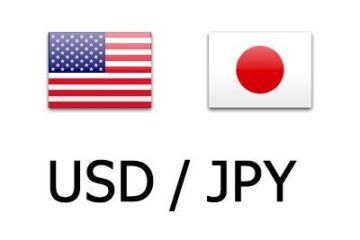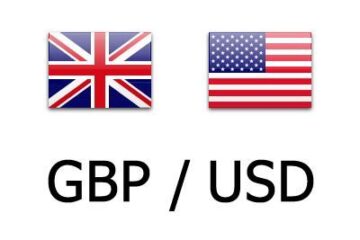Whether you’re a seasoned shopper or a casual browser, chances are the way you’ve procured your goods has changed quite a bit over the last several years or so.
A decade ago, you might have gone out for most of the things you needed. Whether it was for sporting goods, camping equipment, groceries, pet supplies, kids’ toys, jewelry, or even a new car – the odds that you went to a physical store were pretty good.
And the odds that you’d go to a different store for each of those distinct needs were pretty good, too.
Sure, some larger corporate stores have always stocked a multitude of things you might need for furnishing a new home. People have been getting their sheets, appliances, and shoes from department stores in the mall for years.
And off-mall retailers like Target (TGT) and Walmart (WMT) have risen in popularity largely because they offer one-stop shopping options without needing to go into a mall.
But a large shift in our shopping behaviors, particularly following the pandemic, has changed where that point of sale takes place.
Many of us still shop at Target or Walmart for everything from diapers to detergent. But an increasing number of us buy that stuff online, eliminating the need for a stop at the brick and mortar location entirely.
A woman holding a credit card shops online.
E-commerce has changed how we shop
Since you don’t need a car (or a train, or a reusable shopping bag) to shop anymore, most of us rely on our credit cards to make purchases and save time.
As of the first quarter in 2024, 15.9% of all retail sales are done online. This is up a full percentage point from the same time period just one year ago, and that trend isn’t likely to slow down anytime soon.
“By 2027, this will have surpassed 20% to hit 20.6%, bringing the total retail e-commerce sales to more than $1.7 trillion,” Oberlo writes. “In other words, of every $1 spent on US consumers, more than $0.20 will be through online channels. This marks an impressive 10.7 percentage point increase in less than a decade.”
More Retail:
Ulta CEO sounds the alarm on a growing problemLululemon releases a first-of-its-kind productTarget store introduces a new ‘over 18’ policyAmazon launches genius new subscription product
And while consumer taste can be fickle, our newly acquired online shopping habits are more or less here to stay. Many of us have now been trained to trust online sellers out of necessity; Covid shut down most brick and mortar stores for a period of time. For those of us who still wanted groceries, toilet paper, home improvement items, or adult coloring books, the way to procure such goods was online. And we haven’t really looked back since.
“E-commerce sales increased by $244.2 billion or 43% in 2020, the first year of the pandemic, rising from $571.2 billion in 2019 to $815.4 billion in 2020,” the U.S. census writes.
Moving to online fulfillment became vital to a company’s survival almost overnight. Even stores with the most devoted in-person shoppers, like the aforementioned Walmart and Target, plus members-only warehouses like Costco Wholesale (COST) .
Suddenly, it seemed like every major grocery store in town had designated drive-up parking spots for shoppers who preferred to make their purchases online. Here are three of the potential biggest winners who stand to gain the most as the e-commerce economy grows.
1. CrowdStrike
It’s gotten way easier to shop online without even having to think about it. But the backend can be a far more complex place to be. Almost all of us are using credit cards and have gotten used to handing over sensitive personal information just for the ease of a transaction.
CrowdStrike (CRWD) , a cloud-based digital information company, protects sensitive user data. Its proprietary Falcon OverWatch is on what it calls a constant hunt, scanning for threats or pitfalls, which is particularly helpful for smaller companies that may have an online presence but a less robust in-house cybersecurity team.
Related: Popular bakery chain files unexpected Chapter 11 bankruptcy
CrowdStrike benefits from more than just small mom and pop shops, though. It boasts over 270 Fortune 500 clients, including Walt Disney (DIS) , Nordstrom (JWN) , and 15 of the top 20 U.S. banks. It can protect anywhere from 10 to 10 million endpoints, making it a popular solution for online businesses of all shapes and sizes. And since it’s cloud based, it layers nicely with other cloud providers; it’s built on Amazon Web Services (AWS). To date, it has over $1 billion in AWS Marketplace sales.
CrowdStrike shares are up 49% this year.
2. Shopify
Rather than picking one or two potential companies that could have large upside as e-commerce grows, it may be a better strategy to select a company that casts a wide enough net to capture the online trend as a whole.
Shopify (SHOP) is a leading e-commerce platform, which essentially enables an online presence for millions of businesses. During the pandemic, Shopify tripled its revenue between 2020 and 2021, rapidly adding more clients to its roster and building out more robust capabilities. Some of the more notable businesses that use Shopify include Heinz (KHC) , PepsiCo (PEP) , Sephora, Kylie Cosmetics, Gymshark, and Alo Yoga.
Related: Costco makes major change customers will notice right away
One reason it’s so popular: It’s super capable on mobile devices. Approximately 80% of Shopify’s traffic comes from mobile devices like phones or tablets, which can make for an easier push to checkout, particularly if a brand is popular on, say, social media.
Global e-commerce sales are projected to reach $7.96 trillion annually by 2027, according to market research firm eMarketer. Since Shopify offers relatively competitive pricing tiers via its sticky subscription model, it’s accessible to even the smallest businesses just starting out.
Shopify shares are down 16.5% this year, after reporting a surprise loss for the first quarter. A number of analysts have been recommending the stock since.
3. PayPal
When it comes to mobile transactions, however, perhaps no name comes easier to mind than PayPal (PYPL) .
PayPal is one of the original systems that lets users securely send and receive money without needing to send something that may be more readily compromised, like a paper check.
And in many cases, PayPal manages both sides of the transaction. It boasts over 400 million customer accounts and 35 million merchant accounts around the world, which equates to about 25% of all online transactions around the world annually.
Similar to Shopify, PayPal also manages a considerable load of mobile transactions. About 79% of purchases made on PayPal stores are done so via mobile, and its streamlined point of sale pages make purchases far easier for folks on the go. It also has a sticky subscription model for businesses, but since it’s a market leader in online transactions, it’s PayPal’s name recognition that gives it the extra oomph. It claims customers are 2.8 times more likely to complete a transaction online if they see a store offers PayPal as a checkout option.
Shares are off 1.3% this year.
Related: Veteran fund manager picks favorite stocks for 2024


